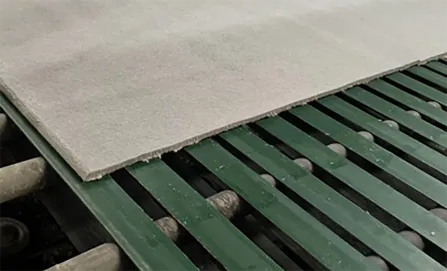Dec . 12, 2024 09:33 Back to list
t bar grid ceiling
Understanding T-Bar Grid Ceilings A Comprehensive Overview
T-bar grid ceilings, a common feature in commercial and residential buildings, are an architectural solution that combines functionality with aesthetic appeal. This ceiling system has gained popularity due to its versatility, ease of installation, and adaptability to various interior designs. In this article, we will explore the components of T-bar grid ceilings, their benefits, and their applications.
What is a T-Bar Grid Ceiling?
A T-bar grid ceiling system consists of a framework made up of long, horizontal metal or vinyl strips that form a grid pattern. The “T-bar” refers to the cross-section of the main runners and cross tees, which resemble the letter “T.” These strips create a support structure that holds ceiling tiles or panels in place, effectively concealing electrical wiring, ductwork, and plumbing systems above the ceiling.
Components of a T-Bar Grid Ceiling
The main components of a T-bar grid ceiling include
1. Main Runners These are the primary horizontal support systems that run the length of the room. They are typically spaced four feet apart and provide stability for the grid.
2. Cross Tees Connecting the main runners, cross tees form a grid pattern, usually spaced two feet apart. They support the ceiling tiles or panels and help maintain the structural integrity of the ceiling.
3. Wall Angles These are installed along the perimeter of the ceiling and help to secure the grid system and provide a clean, finished look.
4. Ceiling Tiles/Panels Available in a variety of materials, colors, and designs, these tiles fit into the T-bar grid and serve both functional and decorative purposes.
Benefits of T-Bar Grid Ceilings
T-bar grid ceilings offer numerous advantages, making them a popular choice in many applications
t bar grid ceiling

2. Accessibility One of the main benefits of a T-bar grid ceiling is that it allows easy access to the space above the ceiling. This is particularly beneficial for maintenance and repairs, as ceiling tiles can be easily removed to access electrical and plumbing systems.
3. Acoustic Performance Many ceiling tiles used in T-bar grids are designed to absorb sound, reducing noise levels in a given space. This is especially valuable in commercial environments such as offices or schools.
4. Aesthetic Versatility T-bar grid ceilings can accommodate a wide variety of ceiling tiles, allowing for customization in design and appearance. From traditional to modern designs, the options are virtually limitless.
5. Fire Resistance and Safety Ceiling tiles used in T-bar grid systems are often made from materials that comply with fire safety regulations, enhancing the overall safety of a building.
Applications of T-Bar Grid Ceilings
T-bar grid ceilings are widely used in various settings, including
- Commercial Spaces Office buildings, schools, hospitals, and retail stores frequently utilize T-bar grid ceilings due to their functionality and sound-absorbing properties.
- Residential Homes Homeowners may choose T-bar grid ceilings for basements, laundry rooms, and garages, providing a practical solution for finishing these spaces.
- Industrial Environments Warehouses and factories may implement T-bar grid ceilings to conceal mechanical systems and create a cleaner-looking environment.
Conclusion
In conclusion, T-bar grid ceilings represent an effective combination of practicality and design. With their simple installation process, ease of accessibility, acoustic benefits, and aesthetic versatility, these ceiling systems have become a staple in both commercial and residential architecture. As interior design continues to evolve, T-bar grid ceilings will likely remain a popular choice, meeting the diverse needs of spaces while providing a functional solution to modern building designs.
-
Durable Ceiling T Grid Systems | Easy InstallationNewsAug.29,2025
-
PVC Gypsum Ceiling: Durable, Laminated Tiles for Modern SpacesNewsAug.28,2025
-
Pvc Gypsum Ceiling Is DurableNewsAug.21,2025
-
Mineral Fiber Board Is DurableNewsAug.21,2025
-
Ceiling Tile Clip Reusable DesignNewsAug.21,2025
-
Ceiling T Grid Modular DesignNewsAug.21,2025







